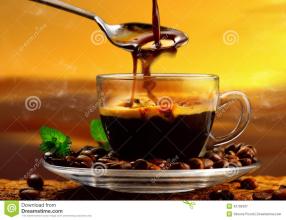Introduction to the coffee flavor and taste manor of the gentle aroma Hassanda Coffee Garden in Ecuador
The names of the provinces are as follows: Pichincha, Azuay, Bolivar, Cañar, Carchi, Codoto Pakhi, Chimborazo, El Oro, Esmeraldas, Guayas, Imbabura, Loja, Los Rios, Manabi, Zamora Chinchipe, Napo, Morona Santiago, Pastaza, Tungurahua, Galapagos, Sucumbios and Francisco de Orellana The port of Guayaquil is Ecuador's largest seaport. It faces the Pacific Ocean and backs to Mount Santa Ana. The nearby island of Pune serves as a natural barrier to protect the harbour from storms. There is a dock to the south, more than 900 meters long. In the harbor, ships from different parts of the world are moored, flying various flags. The port railway leads to Quito, the capital, and a series of highways connect Quito with other cities in the country. Bananas, cocoa, coffee, cotton and other products from all over the country are collected and distributed here. Guayaquil also played an important role in the history of friendly exchanges between the peoples of China and Ecuador. As early as the 18th century, Chinese clothing, textiles and other goods were transported to Ecuadorian cities through Guayaquil. In August 1978, the Chinese freighter Jialing River arrived here for the first time. Most of the imported and exported goods of the two countries are also Ecuador's national emblem, which was used in 1900 and is similar to the national emblem of Colombia. A fierce "American Condor" vulture spreads its wings above the national emblem. It is Ecuador's national bird, symbolizing sovereignty and independence. Ecuador's national emblem has a unique design concept, fully demonstrating the national flavor: Ecuador's highest peak, Chimborazo Mountain, is covered with snow. Against the blue sky, it stands towering on the Pacific coast. The trees at the foot of the mountain are verdant. A big river winds out from the depths of the mountains and gradually flows into the blue sea. An ecuadorian pride in south america's first steam-powered ocean-going vessel lies at sea. Above the snowy peak, a Mayan culture symbol of the "sun in May" radiant. On both sides of the sun marked with March, April, May, June month symbols "Zodiac twelve officials", representing the Ecuadorian people in 1845 to maintain national independence against foreign invasion of the difficult years. The bar at the bottom represents the state institutions of the Republic, symbolizing justice and authority.
Guador coffee has distinctive South American coffee characteristics. The fragrance was soft, as if it could go back to the ancient and mysterious Inca Empire. Coffee is a good history, and you need to savor it carefully to understand the vicissitudes.
Balanced low acidity, aromatic and rich. The bitterness is not obvious, the taste is clear, but there is a lingering aftertaste lingering for a long time. Superior environment created a coffee crisp character, and coffee farmers enthusiasm and give the coffee enthusiasm of life Ecuador also produces coffee. Because the Andes pass through from the middle, coupled with sufficient precipitation, suitable temperature and abundant light under the influence of tropical climate, Ecuador's coffee grows very well. Gigante coffee and Galapagos coffee are the best of coffee, although Ecuador has not been growing Arabica coffee for a long time. Galapagos coffee is recognized as green natural coffee because the Ecuadorian government has designated the archipelago as a national park, which not only no longer allows new agricultural land, but also prohibits the use of chemical fertilizers, pesticides, herbicides and other chemicals. Although the altitude of about 200m on the island is very low, it is specially affected by the ocean. The climate in this area is equivalent to that of 1000m-1800m on land. It is very suitable for the growth of coffee, especially the quality of super hard coffee (SHB). Ecuador's name may be known because of football, because of the reputation of banana country, because of the rare animals and plants in Galapagos Islands. Indeed, Ecuador, a South American country with a long history, rich products, beautiful landscapes, exotic species, among which the Galapagos Islands are rich in large turtles and lizards, is one of the world's "human cultural and natural heritage" protected areas Arabica coffee trees were first introduced to Ecuador in 1952, the quality of its coffee is very good, especially the coffee harvested in early June. Ecuadorian coffee beans can be divided into Galapagos (Galapagos) and Gigante (Gigante) two varieties, both have large particles, heavy portions of characteristics. Ecuadorian coffee can be divided into two types according to quality: No.1 and ExtraSuperior. They are mainly exported to the Nordic countries of Scandinavia.
The main problem coffee producers face is trying to maintain consistent quality. The coffee is generally very balanced and refreshing, with a distinctive aroma.
Ecuador is one of the few countries in South America that produces both Arabica coffee and Robaik coffee. But as the land available for arabica coffee trees dwindles, robert coffee production is increasing. The best Arabica coffee is grown in the Andes, especially in the Chanchamgo Valley, which divides into two mountain ranges extending from south to north into central Ecuador

Important Notice :
前街咖啡 FrontStreet Coffee has moved to new addredd:
FrontStreet Coffee Address: 315,Donghua East Road,GuangZhou
Tel:020 38364473
- Prev

An introduction to the characteristics of the coffee flavor and taste of the Santa Cruz Manor in Ecuador
West coast: including coastal plains and foothills, high in the east and low in the west, generally below 200 meters above sea level, with some hills and low mountains at an altitude of 600 to 700 meters. Belongs to the tropical rain forest climate, the southernmost end begins to transition to the savanna climate. The average annual precipitation decreases from more than 3000 mm to about 500mm from north to south. Central Mountains: the Andes enter Ecuador from Colombia
- Next

Introduction to the Flavor and Taste of Coffee Manor in San Pedro, Puerto Rico
On September 23, 1869, the people of Puerto Rico were in R. Under the leadership of Emmetrio Betons, an uprising was held in the town of Larez (known as the voice of Larez in history), which declared the establishment of a republic on the 24th and was later suppressed by the Spanish colonial army. After a long struggle, Puerto Rico was finally granted local self-government by Spain. However, from then on, after the Spanish-American War, the island became an American colony, when
Related
- Does Rose Summer choose Blue, Green or Red? Detailed explanation of Rose Summer Coffee plots and Classification in Panamanian Jade Manor
- What is the difference between the origin, producing area, processing plant, cooperative and manor of coffee beans?
- How fine does the espresso powder fit? how to grind the espresso?
- Sca coffee roasting degree color card coffee roasting degree 8 roasting color values what do you mean?
- The practice of lattes: how to make lattes at home
- Introduction to Indonesian Fine Coffee beans-- Java Coffee producing area of Indonesian Arabica Coffee
- How much will the flavor of light and medium roasted rose summer be expressed? What baking level is rose summer suitable for?
- Introduction to the characteristics of washing, sun-drying or wet-planing coffee commonly used in Mantenin, Indonesia
- Price characteristics of Arabica Coffee Bean Starbucks introduction to Manning Coffee Bean Taste producing area Variety Manor
- What is the authentic Yega flavor? What are the flavor characteristics of the really excellent Yejasuffi coffee beans?

